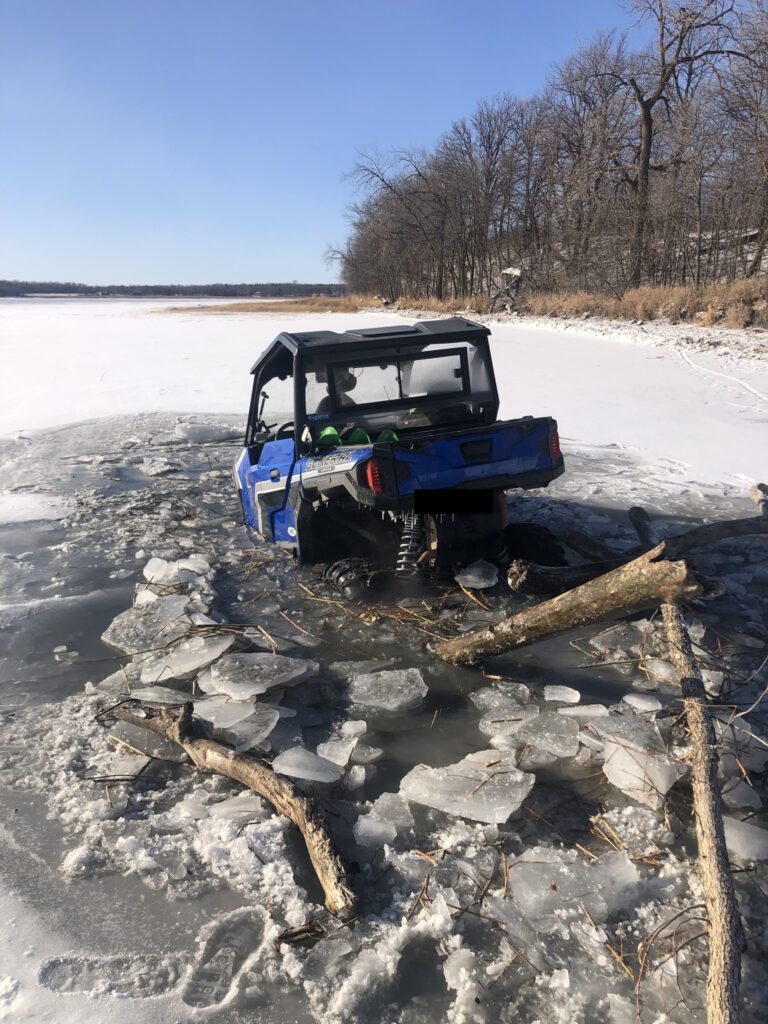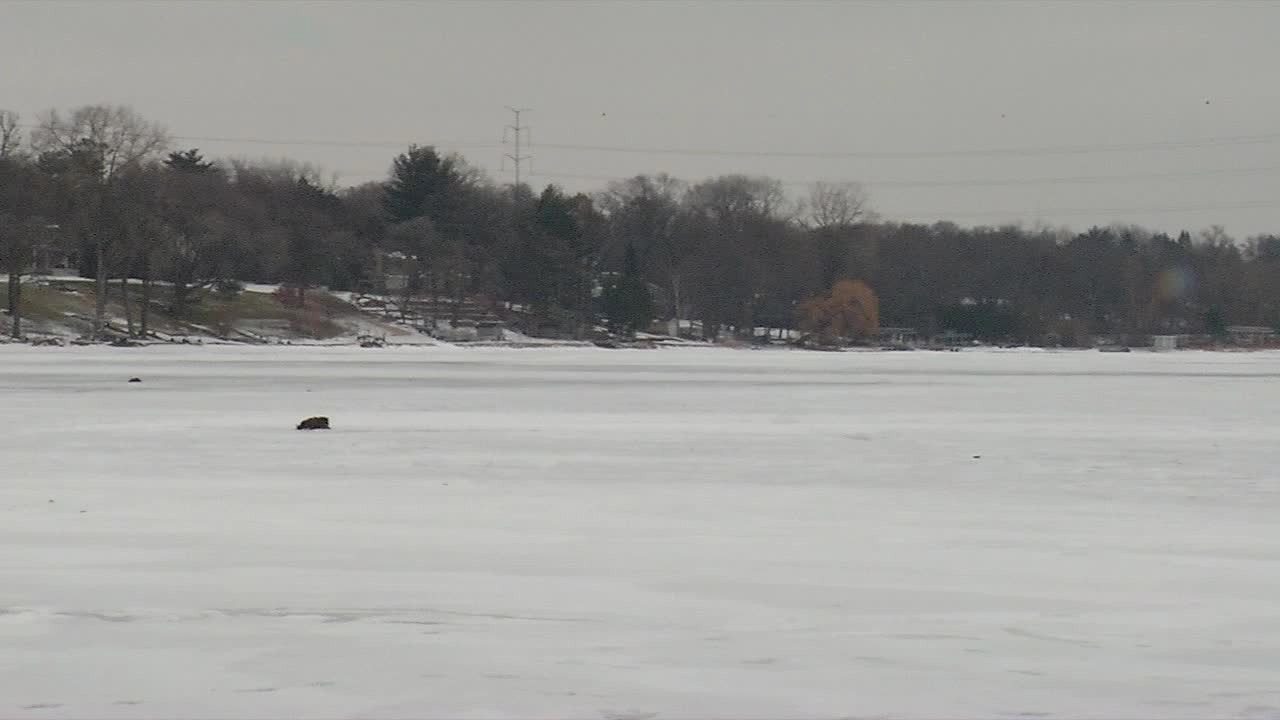‘Ice never 100% safe’, ice rescue training underway
Their message is simple and can save lives: ice is never 100% safe.
The Hennepin County Sheriff’s Office (HCSO) and Minnesota Department of Natural Resources (DNR) are not talking about ice cubes keeping your drink cold, but the frozen lakes and rivers Minnesotans love to spend time on during the winter season.
In early December, the DNR posted on Facebook that a side-by-side ATV partially went through the ice on Lake Mary, near Alexandria — with it, sharing a warning about going onto the ice with machines.

The HCSO does several cold water rescue trainings throughout the season — including with fire departments from across the county.
“You can walk five feet from good ice and be almost on no ice,” Deputy Sheriff Mathias Weinzierl, with the HCSO, said.
“The last couple of days [with] the rain and the warm warmer weather has definitely taken a toll on the ice,” Weinzierl added about the poor ice conditions on Lake Minnetonka.

(FILE/KSTP-TV)
Part of their cold water training includes making sure their waterproof suits are in good shape and their rescue vehicles are ready to go. New this year, the sheriff’s office has a four-wheeled vehicle that can float if it breaks through the ice — they also have their tried-and-true airboat that can easily maneuver across the lake.
This training is crucial because history shows ice activities can be deadly — according to the DNR, since 2017 there have been an average of 3 to 4 ice deaths per winter season. In more than 75% of those cases, an ATV or snowmobile were involved.
“Even though a lake might have enough ice in one spot, it might not have enough ice somewhere else [and] that’s what we’re seeing a lot of out there,” Nicole Biagi, DNR’s ice safety coordinator, said.
“Have the proper safety equipment, especially if you are venturing out on that thinner ice,” Biagi said. “You want to have flotation gear, ice picks, a throw rope, and go out with a buddy never go out alone.”
Biagi says to check the ice as you go out — the DNR has guidance on what you should bring on the ice depending on the thickness.
